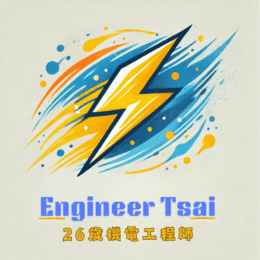▶️ Watch Now: Why Do Electrical Devices Heat Up?
Introduction: Why Does It Get Hot? Isn’t It Just Electricity?
Why do conductors heat up when current flows through them? You may have felt your phone getting warm while charging, your laptop becoming too hot to touch after prolonged use, or noticed how quickly an induction stove boils water. These everyday phenomena all relate to a key concept in electricity — the thermal effect of electric current, also known as the Joule Effect.
In this article, we’ll start from the basics to explain why current produces heat, what factors increase this effect, and how it’s applied — or causes problems — in daily life, technology, and engineering.
Chapter 1|What Is the Thermal Effect of Electric Current?
The thermal effect of electric current refers to the heat produced when current flows through a conductor with resistance. As electrical energy is partially converted into heat, the conductor warms up.
This phenomenon was discovered by British physicist James Joule, and is described by Joule’s Law:
Q = I² × R × t
Where:
Q = heat generated (in joules)
I = current (in amperes)
R = resistance of the conductor (in ohms)
t = time the current flows (in seconds)
This formula tells us: as long as there’s resistance and current flows, heat will be generated.
Chapter 2|Why Do Electrical Devices Heat Up?
Electrical devices heat up because current flows through internal wires, resistive components, or semiconductors — all of which have resistance that turns electrical energy into heat.
For example:
- Phone charging: Heat is generated as current flows through the battery management circuit and tiny components.
- Computer processing: CPUs and GPUs draw large currents during intensive tasks, causing chips to heat up.
- Hair dryers or electric blankets: These are intentionally designed with high-resistance elements to convert electricity into heat.
If heat isn’t dissipated properly — or if high current persists too long — the device may overheat, leading to reduced lifespan or even safety risks.

Chapter 3|Three Key Factors That Influence Heat Generation
According to Joule’s Law, the amount of heat produced by electric current depends on three main factors:
- Current (I): The greater the current, the more heat is generated — and it increases exponentially. For example, doubling the current produces four times the heat.
- Resistance (R): Materials with higher resistance generate more heat. That’s why heating elements often use high-resistance alloys like nichrome.
- Time (t): The longer the current flows, the more heat accumulates over time.
Other factors that affect resistance and heat dissipation include:
- Material: Pure copper conducts electricity well and generates less heat due to low resistance.
- Length and Thickness: Longer, thinner wires have higher resistance and heat up more easily.
Chapter 4|Applications & Challenges: Heat Is Not Just a Side Effect
✅ Useful Applications of the Heating Effect:
- Heating devices: Electric kettles, rice cookers, and induction stoves rely on designed heating elements to convert electricity into heat.
- Fuses: Designed to heat up and melt when current exceeds safe levels, breaking the circuit to prevent damage.
- Temperature sensors: Thermocouples use heat differences to generate small voltages for precise temperature measurement.
⚠️ Challenges of the Heating Effect:
- Energy loss: In most electronic devices, unwanted heat represents wasted energy and reduced efficiency.
- Component aging: Excessive heat accelerates the degradation of plastics, solder joints, and metal components.
- Safety risks: Overheating can lead to component failure or even fire hazards.
That’s why modern electrical devices include thermal management solutions such as:
- Heat sinks, cooling fans, and thermal paste for better heat dissipation.
- Overheat protection circuits and thermal sensors to cut power when temperatures get too high.
Chapter 5|Try It Yourself: A Simple Joule Heating Experiment
You’ll need:
- 1.5V battery
- A short piece of thin copper wire
- A small light bulb
Steps:
- Connect the copper wire and the bulb in series with the battery.
- Turn on the circuit and observe the light bulb.
- Touch the copper wire gently after a few seconds to feel the warmth.
What happens:
- The glowing filament shows that current is generating heat.
- If the copper wire is thin enough, it will start to feel warm — a clear, hands-on demonstration of Joule Heating.
Where there’s current and resistance, there’s heat.

Conclusion & Further Reading
The heating effect of electric current may seem like a basic physics concept, but it plays a critical role in modern technology and everyday life. From improving energy efficiency to designing electronic components, and from ensuring safety to enabling industrial processes — it’s both a powerful tool and a design challenge.
📌 Recommended Articles:
🔹 Resistors: Functions, Types, and Applications You Need to Know
A deep dive into how resistance influences current flow and heat generation in circuits.
🔹 Electrical Energy Conversion: How Energy Transforms for Everyday Use
Explore the many ways electricity transforms into heat, light, or motion — and what that means for efficiency and energy loss.
🔹 The Fundamentals of Circuits: Power, Wires & Load
Learn how to design circuits that avoid overheating and ensure long-term reliability.


